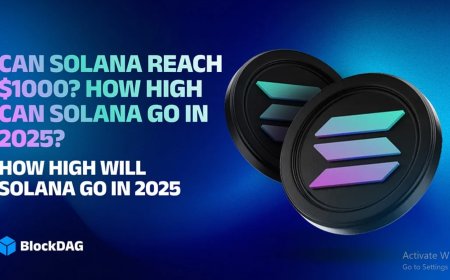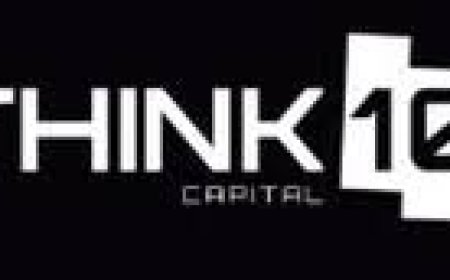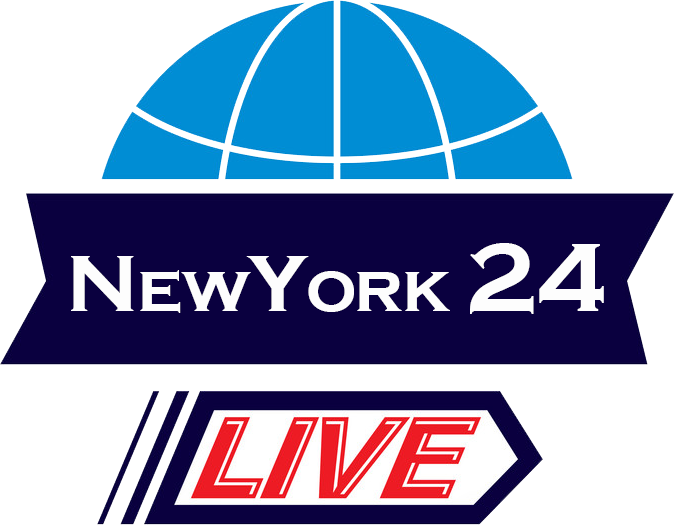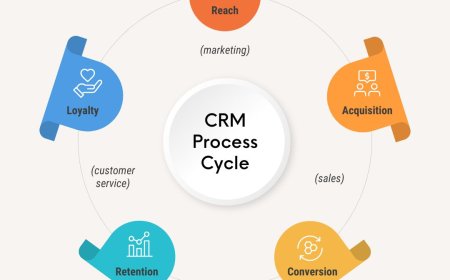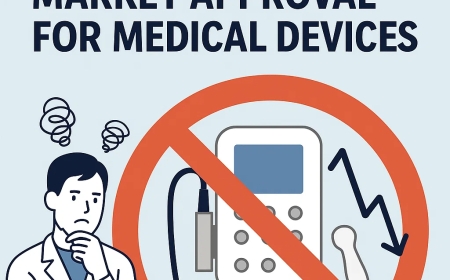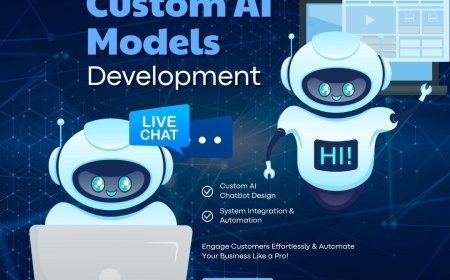Choosing the Right Manufacturing Data Analytics Platform: A Buyer’s Guide
Learn how to choose the best manufacturing data analytics platform with this comprehensive buyer’s guide. Compare features, scalability, integration, and ROI.
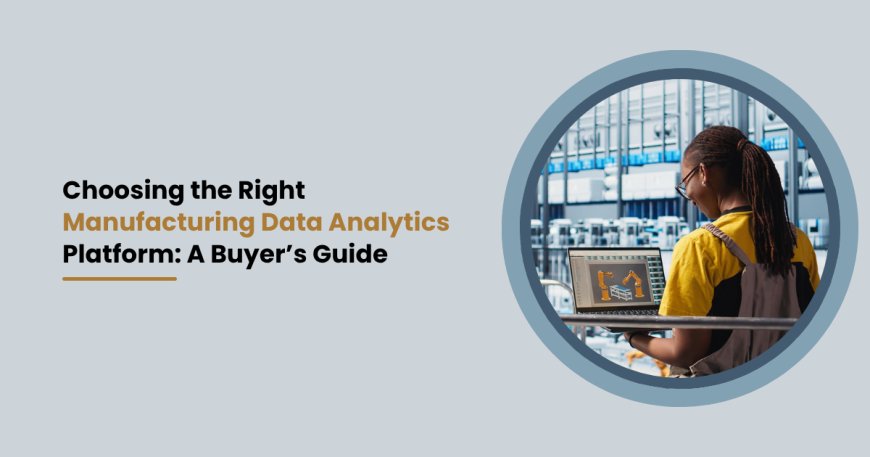
In 2024, manufacturers using data analytics saw productivity improve by35%. According to a McKinsey report, data-driven factories reduced unplanned downtime by over 30%. Effective Manufacturing Data Analytics platforms help manufacturers optimize processes, reduce waste, and enhance quality. This buyers guide reviews technical aspects to evaluate when selecting a platform that suits varied factory environments.
Why Manufacturing Data Analytics Matters
Manufacturing plants generate massive data from sensors, machines, logistics, and quality control. Raw data means little without structured analysis. Analytics platforms convert this data into actionable insights. Engineers can spot bottlenecks, predict failures, and improve output. The result is measurable gains in production rates, equipment lifespan, and cost savings. Smart factories rely on these platforms to stay competitive in Industry 4.0.
Core Capabilities to Prioritize
A robust analytics platform should cover key areas: data ingestion, storage, processing, visualization, alerting, and integration. Buyers must confirm the platform meets all these needs and supports future expansion.
1. Data Ingestion
The platform must handle high-frequency data from PLCs, SCADA systems, IIoT, MES, and ERP systems. Look for connectors supporting MQTT, OPC UA, REST API, and streaming inputs like Kafka. It must avoid data losses and support bi-directional flow for remote commands or configuration updates.
2. Storage Architecture
Manufacturing data often arrives in time series format. Platforms should use efficient stores like InfluxDB, TimescaleDB, or distributed data lakes. They must compress, index, and retrieve time-series data for weeks or years. Storage should scale as volume grows.
3. Data Processing and Modeling
Platforms must support real-time analytics and batch processing. The system should apply aggregations, feature engineering, and predictive models. Buyers should prefer platforms that allow custom Python or R code. The platform must enable in-place processing without routing data elsewhere.
4. Visualization and Dashboards
Operators need clear dashboards to monitor KPIs such as OEE, MTBF, and yield rate. The platform should offer customizable charts, charts with drill-down features, and embedded analytics tools. Role-based views let line managers see relevant metrics.
5. Alerts and Notifications
Timely action requires alerts. Platforms must support configurable thresholds, trend-based triggers, and anomaly detection. They should send notifications via email, SMS, webhooks, or messaging tools like Slack. Alert systems reduce response times on equipment failure.
6. Integration and APIs
A good analytics platform must integrate with existing IT stacks: ERP, Maintenance Management, supply chain tools. It should also serve data to downstream systems using APIs, SDKs, or streaming endpoints.
Deployment Models: Cloud, On?Premises, or Edge
Deployment choice affects performance, compliance, and control. Each option has key considerations.
1. Cloud
Cloud platforms provide scalability and quick deployments. Providers like AWS, Azure, and Google Cloud offer managed services and global access. Cloud solutions suit multi-site operations. However, latency and connectivity issues must be managed. Data sovereignty may matter under GDPR or local regulations.
2. On?Premises
Deploying locally keeps data within factory networks. It gives full control, low latency, and supports legacy systems. On-prem setups demand skilled teams, hardware management, and capacity planning. Companies using OT systems often prefer this model.
3. Edge
Edge analytics processes data near source, reducing network load and latency. Small compute nodes run analytics on the floor, sending only summaries to the cloud. Ideal for remote plants with limited internet. However, managing distributed systems adds complexity.
Many manufacturers adopt hybrid deployments: edge for real-time control, cloud for historical insights, and centralized dashboards.
Scalability and Performance
Factories vary in machine count and data volume. A platform must grow from small pilot setups to full-scale operations. The platform should:
-
Support horizontal scaling of ingestion and processing
-
Auto-shard or partition data
-
Maintain query performance under load
-
Offer SLA guarantees
Performance benchmarks should include ingestion rate limits, query response times, and retention capacity.
Security, Privacy, and Compliance
Manufacturers handle sensitive data: proprietary processes, product defects, and worker efficiency logs. Analytics platforms must edge security in four key areas:
-
Network security: TLS encryption, VPN, IP whitelisting
-
Authentication: Role-based IAM, SSO, MFA
-
Data control: Encryption at rest, configurable retention
-
Audit trails: Record access, changes to dashboards or models
Compliance with standards such as ISO 27001, NIST, and GDPR may be mandatory for certain firms.
User Experience and Accessibility
User adoption depends on ease of use. A strong interface appeals to frontline operators, engineers, and managers. Technical buyers should test:
-
Ease of dashboard creation
-
Data discovery via drag-and-drop
-
Contextual data explanations
-
Mobile app or responsive design
Look for guided experiences, such as prebuilt templates for OEE tracking or anomaly detection.
Advanced Analytics and AI
Manufacturers increasingly rely on predictive maintenance and defect detection. Platforms should support:
-
Statistical models for forecasting
-
Anomaly detection with auto-derived baselines
-
Root cause analysis based on event logs
-
Custom ML pipelines in Python, scikit-learn, TensorFlow
The platform needs tools to deploy and monitor these models in production.
Reporting and Collaboration
Manufacturers need to share insights across teams. Platforms should allow:
-
Scheduled or on-demand PDF and CSV exports
-
Dashboard sharing with controlled permissions
-
Embedded analytics in operator terminals
Audit trails ensure compliance and transparency during investigations or regulatory audits.
Cost: Licensing, Infrastructure, and Support
Total cost includes software licenses, hardware or cloud fees, implementation, training, and ongoing support. Consider:
-
License model: per user, per host, or capacity-based
-
Infrastructure: self-managed servers vs managed cloud services
-
Training: initial and onboarding costs
-
Support: SLA response times, upgrade policies
Forecast three-year costs, including scaling and optional modules like AI or MES integration.
Vendor Evaluation Checklist
Effective vendor selection requires structured assessment. Key technical questions include:
-
Which data sources and protocols does the platform support?
-
What is the maximum ingestion throughput per second?
-
How is processing distributed and scheduled?
-
Can users build custom code within the system?
-
Are templates available for manufacturing KPIs?
-
Does it support multi-tenancy and RBAC?
-
Can it deploy on needed infrastructure models?
-
What security certifications does it hold?
-
How does scaling work and cost change?
-
What SLAs apply and is 24/7 support available?
Demonstrations and pilot trials help assess total fit.
Case Study: Automotive Assembly Line
A global car manufacturer installed a Manufacturing Data Analytics platform to monitor stamping and welding lines. They ingested vibration, temperature, and current data from 500 machines. The platform computed MTBF and flag anomalies in real time using edge compute nodes. Central dashboards displayed site-level performance across locations. Alert thresholds triggered maintenance tickets. The solution reduced unplanned downtime by 25%. It also improved quality yield by 15%. Engineers used the platform to correlate line speed against weld joint strength. This example shows how deep analytics drives operational gains.
Comparing Popular Platforms
Several platforms fit industrial analytics needs:
-
Platform A: Open-source core, strong edge support, cloud option
-
Platform B: Commercial, prebuilt ML models, tight ERP connections
-
Platform C: Scalable SaaS, heavy focus on visualization and mobile
Each platform has trade-offs. Open-source gives flexibility but requires more internal ops. SaaS offers ease of use but may limit compliance controls. Buyers should evaluate integration efforts, customizability, and operational control.
Also Read: Dark Data in Manufacturing: The Hidden Goldmine for Efficiency and Innovation
Integration with Legacy and Modern Systems
Manufacturers rarely overhaul all systems at once. Analytics platforms must interface with both legacy and modern sources:
-
Connect to OPC UA servers on older PLCs
-
Ingest CSV logs from quality testers
-
Pull ERP data from SAP or Oracle via connectors
-
Broadcast insights to MES or WMS
Middleware or ETL services may assist when direct connections are missing.
Support, Community, and Ecosystem
Evaluate vendor support quality, documentation, community forums, and plugin ecosystems. Open-source platforms may offer large, active communities but limited vendor support. Commercial offerings include formal support, training, and dedicated account managers. Ecosystems of integrations, third-party modules, and developer resources enrich platform usefulness early on.
Total Cost of Ownership and ROI
A platform solves problems and delivers returns. Estimate the savings from downtime avoidance, scrap reduction, and yield improvements. Compare this against initial setup (data pipeline, dashboards, training) and ongoing costs. Cost-benefit models help justify purchase and uncover long-term gains.
Final Recommendations for Buyers
Buyers should:
-
Prioritize data ingestion and real-time processing features
-
Test with actual shop-floor data in pilot projects
-
Validate performance under expected data loads
-
Test deployment in cloud, on-prem, and edge mixes
-
Assess user interface usability for technical and non-technical staff
-
Verify access control and data governance
-
Compare parallel cost and ROI scenarios
A structured evaluation ensures the chosen platform fits technical needs and supports future expansion.
The Future of Manufacturing Data Analytics
Analytics platforms continue evolving:
-
Integration of digital twins for holistic factory simulations
-
Expansion of AI-led process optimization
-
Increased use of federated learning for multi-site models
-
Edge-based machine vision diagnosing product defects
-
Compliance automation through traceability tools
Platforms must adapt with modular design, robust API layers, and continuous updates.
Conclusion
Choosing the right Manufacturing Data Analytics platform requires technical due diligence. Buyers must evaluate data ingestion, storage, processing, visualization, security, and deployment options. They must ensure scalability, cost-effectiveness, and support. A well-selected platform can significantly reduce downtime, improve quality, and increase throughput. Following this buyers guide ensures a decision grounded in firm technical and business logic. The right platform becomes a sweet spot where data fuels factory efficiency and competitiveness.







